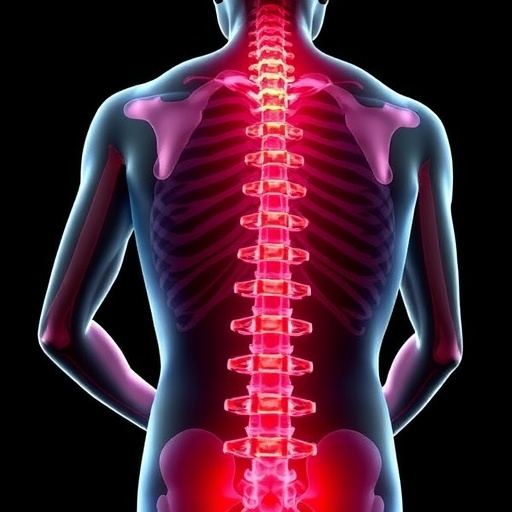In a groundbreaking forensic genetics study published in the International Journal of Legal Medicine, researchers have uncovered a surprising source of genetic complexity that has significant implications for male DNA profiling. The study reveals that sequence homology—a striking similarity in the DNA sequences—between the X and Y chromosomes can cause apparent heterozygosity at the DYS572 locus when analyzed using advanced massively parallel sequencing (MPS) technologies. This discovery challenges long-standing assumptions in forensic genetics and promises to refine the accuracy of male-specific genetic analyses.
Traditionally, forensic DNA profiling relies on the distinctiveness of Y chromosome markers to isolate male-specific genetic signatures, critical for applications ranging from criminal investigation to paternity testing. The Y chromosome, inherited strictly from father to son, is characterized by haplotypes with minimal recombination, producing relatively stable genetic markers. However, this new study identifies a hitherto underappreciated genetic artifact resulting from homology—shared sequence similarities—between the Y chromosome’s DYS572 marker and regions of the X chromosome. This observation disrupts the classic view that the Y chromosome locus should never exhibit heterozygosity, typically reserved for autosomal markers.
Using massively parallel sequencing technologies, which enable high-throughput and detailed interrogation of genetic loci, the research team detected unexpected heterozygous signals at the DYS572 locus. These signals imply the presence of multiple alleles in what is supposed to be a haploid marker exclusive to the Y chromosome. Upon meticulous bioinformatic and molecular analysis, the team demonstrated that this apparent heterozygosity stems from sequencing reads originating not solely from the Y chromosome but also from a homologous segment on the X chromosome, which had been overlooked by conventional genotyping approaches.
This novel insight holds profound implications for forensic DNA typing. Forensic practitioners have long used Y-STR markers, such as DYS572, for male lineage tracing due to their male specificity and non-recombining nature. However, the observed cross-chromosomal homology raises the prospect of complex profiles that could obscure true genetic signatures, potentially leading to misinterpretation in forensic casework. Especially in cases involving mixed male and female DNA, such sequencing artifacts could confound analysis if not properly accounted for.
The research team meticulously examined the genomic architecture surrounding the DYS572 locus, revealing a segmental duplication event in human evolution that preserved homologous sequences on both sex chromosomes. This structural anomaly creates a unique challenge, as next-generation sequencing technologies generate short reads that cannot always be confidently assigned to the Y or X chromosome, leading to ambiguous heterozygous calls in what should be haploid markers.
Importantly, the study underscores that traditional capillary electrophoresis methods, long considered the gold standard for forensic Y-STR profiling, do not reveal this heterozygosity due to their lower resolution in distinguishing homologous sequences. Thus, the rise of high-resolution sequencing methods like MPS has illuminated genetic complexities that were previously masked, necessitating the development of updated analytical frameworks and reference databases.
Implications extend beyond forensics. Population genetics, evolutionary biology, and medical genetics investigations relying on Y chromosome markers must now consider the potential for X-Y homologous interference. This realization prompts a reevaluation of how sex chromosome-linked markers are interpreted in studies involving human ancestry, genetic disease diagnosis, and personal genomics.
The authors propose enhanced bioinformatic pipelines incorporating stringent read-mapping criteria and locus-specific sequence filtering to disentangle true Y chromosome alleles from spurious X chromosome reads. Moreover, they emphasize the need to develop allele identification strategies that leverage long-read sequencing technologies, capable of spanning homologous regions without ambiguity.
This research also raises provocative questions about the evolutionary mechanisms that have preserved such homology between sex chromosomes, typically characterized by divergent and degenerate sequences. It suggests that selective pressures or genetic drift may have maintained segmental duplications influencing genomic stability and recombination patterns within the sex chromosomes.
For forensic scientists and geneticists alike, these findings mandate a reassessment of marker selection and interpretation protocols in DNA typing assays. Accurate male lineage identification demands a nuanced understanding of the genetic landscape, particularly as forensic science increasingly adopts highly sensitive sequencing platforms that expose previously hidden complexities.
Despite the challenges posed, this discovery ultimately enriches our knowledge of human genomic architecture and the subtleties inherent in sex chromosome genetics. It exemplifies how advancing technology drives scientific insight, revealing intricate genomic features once obscured by methodological limitations.
Future research directions will likely focus on broadening the investigation of other Y-STR loci for similar homologous interference and expanding datasets across diverse populations to identify the prevalence and variability of this phenomenon. Additionally, the integration of multidisciplinary approaches spanning genomics, bioinformatics, and forensic science is crucial to establish robust standards in male DNA analysis.
In sum, this pioneering work profoundly reshapes our understanding of male-specific genetic markers and sets the stage for enhanced forensic methodologies. It emphasizes the necessity of continuous vigilance in the interpretation of genetic data amid the transformative evolution of sequencing technologies, ensuring that forensic genetic evidence maintains its reliability and integrity in the justice system.
As forensic genetics embraces next-generation sequencing, discoveries like this remind us that the genome is a dynamic, intricate system filled with surprises. Only through meticulous research and adaptive innovation can we harness these advances to unlock the fullest potential of human genetic information for science and society.
Subject of Research: The study investigates sequence homology between the X and Y chromosomes and its impact on heterozygosity at the DYS572 locus in massively parallel sequencing.
Article Title: Sequence homology between sex chromosomes leads to apparent heterozygosity at the DYS572 locus in massively parallel sequencing
Article References:
Liu, Z., Hu, L., Sun, H. et al. Sequence homology between sex chromosomes leads to apparent heterozygosity at the DYS572 locus in massively parallel sequencing. International Journal of Legal Medicine (2025). https://doi.org/10.1007/s00414-025-03643-7
Image Credits: AI Generated
DOI: https://doi.org/10.1007/s00414-025-03643-7
Tags: DYS572 heterozygosityforensic DNA analysisforensic geneticsgenetic artifacts in profilinggenetic marker stabilitygenetic sequence homologymale DNA profilingmassively parallel sequencing technologiespaternity testing implicationssex chromosome similarityX and Y chromosome comparisonY chromosome markers






